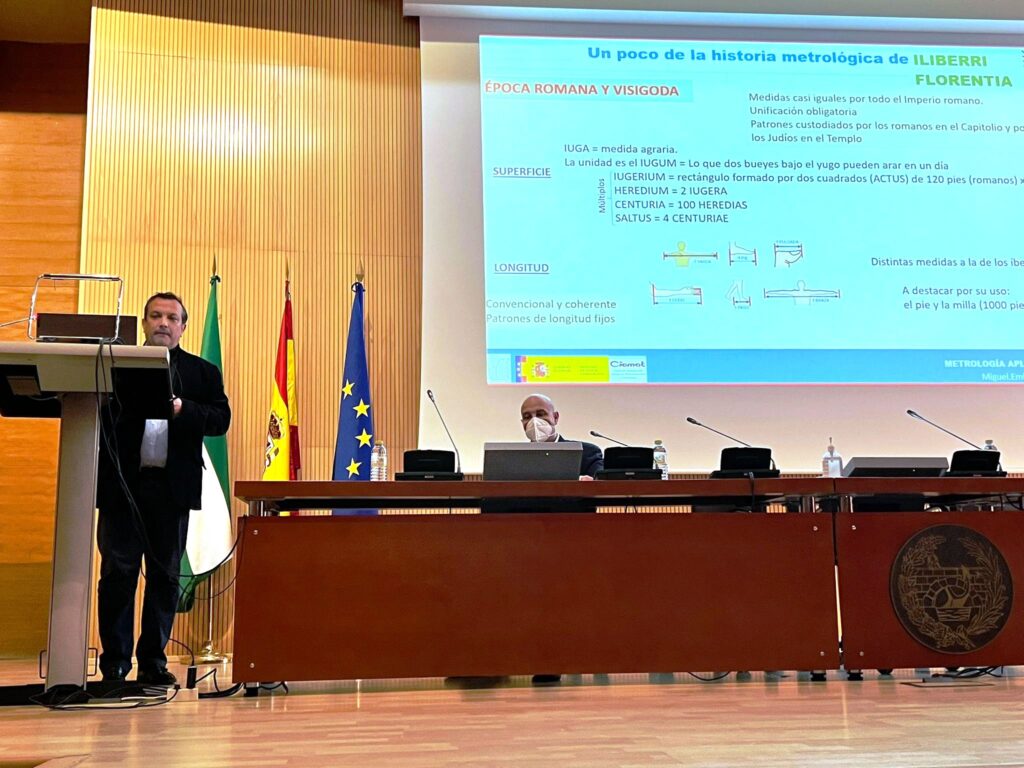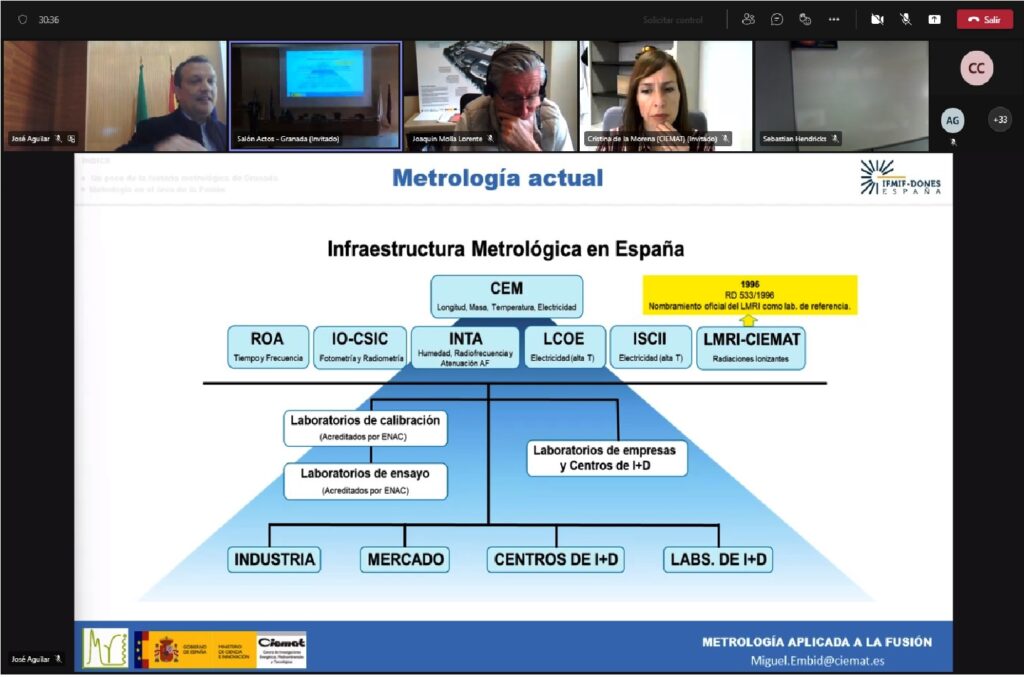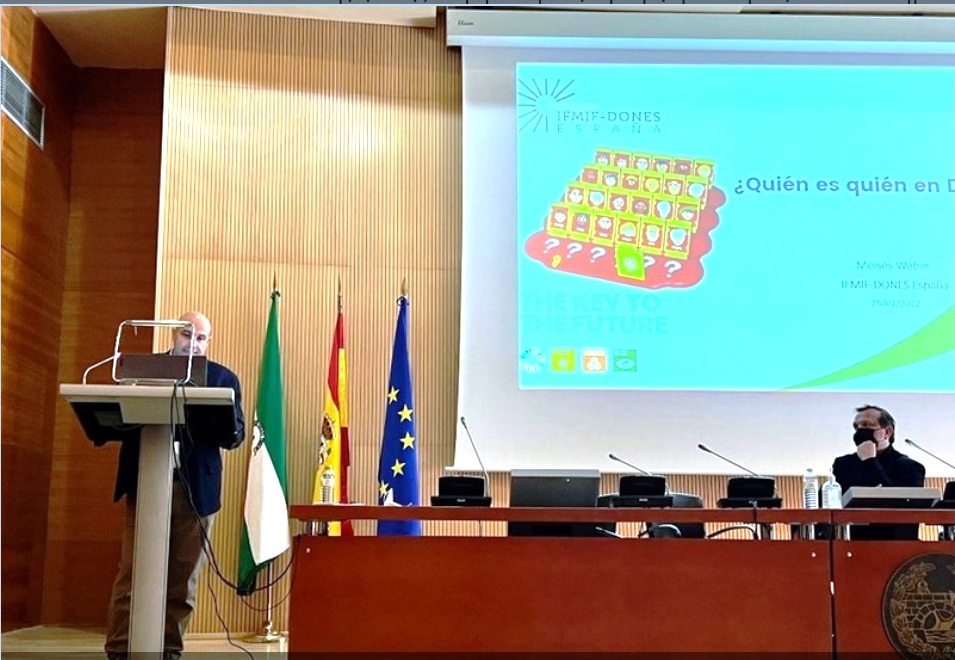DONES Meetings, working as a team in favour of fusion energy
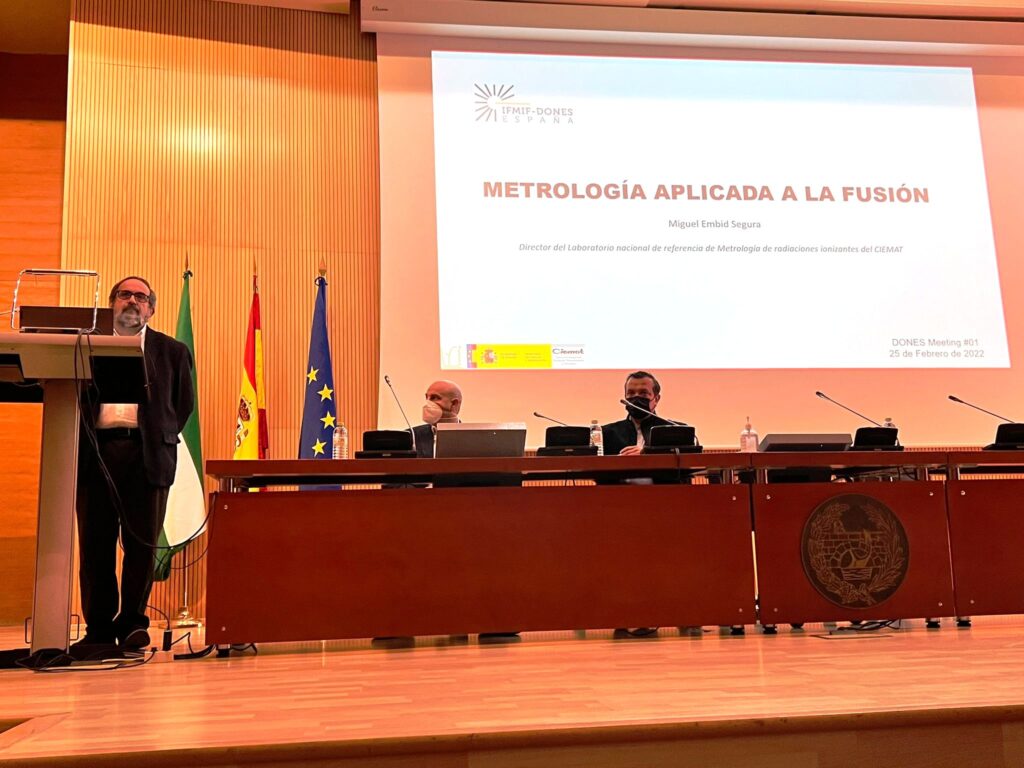
IFMIF-DONES España has launched a series of monthly meetings, in both virtual and face-to-face formats, to facilitate greater cohesion between the teams working in the IFMIF-DONES project. This series, announced under the name of DONES Meetings, have the aim to extend the project and seek new lines of collaboration with more working groups that can add value to any of the areas of the project.
The first seminar took place in the conference hall of the School of Civil Engineering of the University of Granada on Friday 25th February. Ángel Ibarra, Director of IFMIF-DONES España, presented the seminar and introduced the speakers. In his speech, he stressed that the main objective of these meetings is to “create a certain group spirit among those involved in the project”.
Ibarra then handed over to Miguel Embid Segura, Director of the national reference Ionizing Radiation Metrology Laboratory (LMRI), attached to the CIEMAT’s Sub-Directorate General of Institutional Relations and Knowledge Transfer, who presented the paper “Metrology applied to fusion”. After this presentation, Moisés Weber, Doctor in Industrial Engineering, head of the DONES-PRIME project and CIEMAT researcher, participated in the second part of the DONES Meetings. This presentation was more oriented towards audience participation to discuss issues related to IFMIF-DONES and analyse it from different perspectives.
Miguel Embid started his presentation, Metrology applied to Fusion, with a historical introduction to Metrology in Granada. In the introduction, he pointed out the need of different civilisations over the centuries to measure and compare. Examples were mentioned, such as the measurements made by the Egyptians in relation to the flooding of the Nile.
He also introduced how the need to rely on a reference magnitude arises, a “pattern” to facilitate the exchange of information using the same references, up to the present day, in which comparisons are made in relation to universal constants that do not vary over time. The speaker listed specific examples of the evolution of measurements of different magnitudes throughout the history of Granada.
He then referred to the current International System (SI) and the advantages of having these references. He also addressed the meteorological infrastructure in Spain and identified the relevant entities in the field, including the LMRI-CIEMAT.
In the field of current Metrology, he mentioned the reference standards and their custody by different organisations, the need for calibration and the revision of measurements to guarantee the reliability of the data measured. In this section he addressed the existing standards at the LMRI-CIEMAT.
Moisés Weber presented the people working on the project, who are interrelated with each other, in many cases through a very complex network of nodes. He also gave a brief historical introduction to the project that will culminate in the construction of the large scientific facility in Escúzar. He also offered an overview of the institutions and programmes financing the project and the importance of the participation of the industry sector. In this
regard, he highlighted the importance of public-private collaboration in projects of this magnitude and importance.
After each speaker’s intervention, there was a brief round of speeches to clarify some of the questions raised by those who participated in the seminar. The seminar was attended by approximately fifty people present in the auditorium of the University.
